
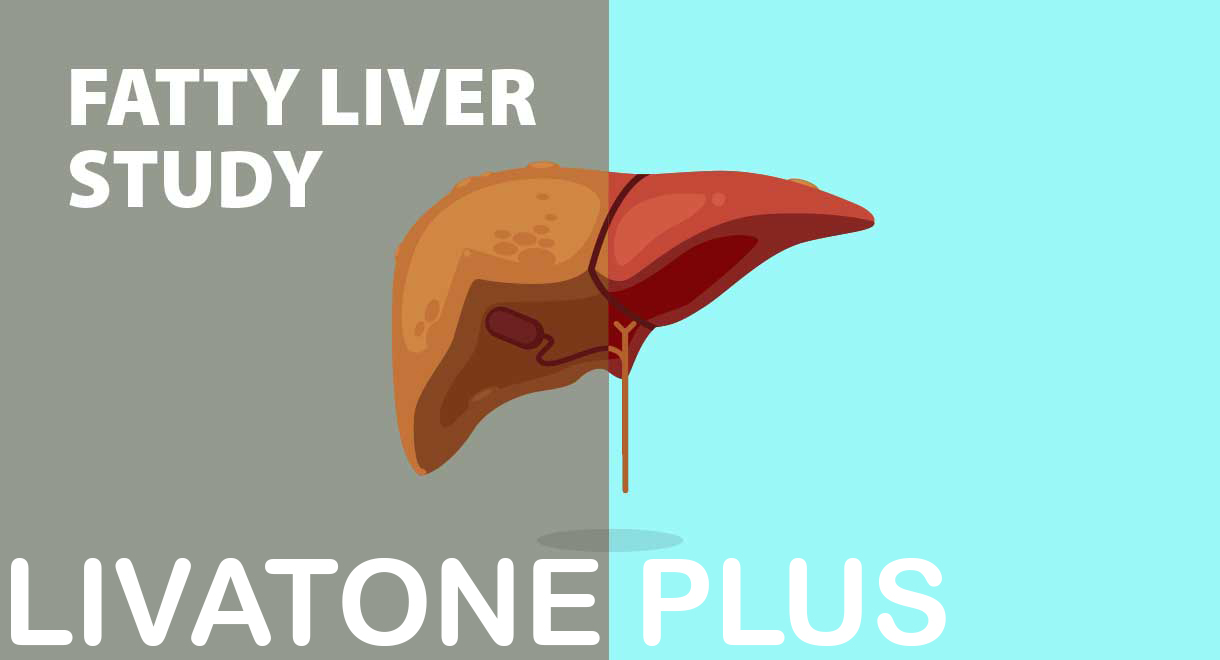
Fatty Liver Study
Effective nutritional and dietary modification can improve fatty liver
Background
A team of medical doctors and naturopaths have implemented dietary changes, as well as the use of a specific liver formula for over 20 years to assist their patients in the reduction of fatty liver and liver dysfunction. This need for information regarding the reduction of fatty liver is a result of the rising number of people being affected by it, together with the limitations of medications for this type of liver injury. Our team of medical doctors noticed the escalation of fatty liver in their Sydney based medical practice. This provided the inspiration to do a clinical study in patients with fatty liver. See below. The Medical Observer Journal of Australia in July 2004 published an article titled "Non-alcoholic fatty liver disease is the new epidemic of liver disease facing the Western world". Well it has been gradually creeping upon us, but in reality it has been an epidemic for at least a decade now! Back in the 1980s fatty liver was mainly seen in alcoholics and rarely in children. Today fatty liver is now recognised as the most common cause of abnormal liver function tests in the USA, UK and Australia. Around 20-25% (or 1 in 4-5 persons in the general population) in Australia and the USA has fatty liver disease. Fatty liver occurs when fat accumulation is more than 5% of the liver weight. Fatty liver is most commonly caused by incorrect diet, obesity, alcoholism and diabetes. Other causes can include malnutrition (especially protein deficiency), congenital metabolic disorders, excessive use or toxicity of orthodox medications (such as corticosteroids, valproic acid, tetracycline, salicylates or synthetic oestrogens) or systemic illnesses with fever.Aim of clinical study
The aim of this study was to illustrate the result of a specific supplemental and dietary regime on liver tests that indicated fatty liver over a 5 to 6 month period.Hypothesis
We were hoping to demonstrate:- Improvement in liver function.
- A reduction in clinical symptomatology A reduction in obesity - This was going to be challenging as 50% of participants could be classified as obese by their BMI and furthermore, it is traditionally thought that those with a fatty liver find it more difficult to lose weight.
- A reduction in the amount of the fatty infiltration of the liver.
- Improvement in the quality of life and general health.
Study design
This study was designed as an investigative initial clinical study.Participant recruitment and selection
Participants were recruited by replying to advertisements placed on health websites, by word of mouth and from patients in Dr Cabot's clinics. Applicants were then asked to complete a questionnaire, which was consequently analyzed and compared with a set of predetermined selection criteria. Participants' suitability was then determined according to this. Applicants needed to fit into the following selection criteria:- Had a previous medical diagnosis of fatty liver.
- Had a positive ultrasound confirming the diagnosis of fatty liver.
- Did not have advanced cirrhosis of the liver or liver failure indicated by symptomatology and/or pathology.
- Did not have other pre-existing, serious, medical conditions such as kidney failure, heart failure, cancer, psychotic illness etc.
- Was not a smoker at time of application.
- Did not drink more than 4 alcoholic beverages per week at time of application.
- Did not use recreational drugs at time of application.
- Was not taking orthodox medication (or was willing to stop medication after discussion with their doctor) which may have hepatotoxic effects (eg. statins and long term antibiotics).
- Was willing to terminate the use of all dietary supplements known to have any effect on liver function.
- Was motivated and enthusiastic to change their diet.
- Was willing to comply with various demands of study executives.
- Was willing to have specific tests required such as blood tests and abdominal ultrasound.
- Was willing to have their results published and allow medical professionals to view results to vindicate results of study.
- Must have filled in and signed a consent form.
Supplement protocol
Participants were instructed to take 2 capsules twice daily of a specialized liver tonic called Livatone Plus. These were provided to the participants at no charge for the duration of the study period. No other nutritional/ herbal supplements with known effects on liver function were permitted to be taken during the study period. Orthodox medications prescribed to participants before the commencement of the study by their pre-existing medical practitioner, were permitted to be continued during the study, provided they did not have known hepatotoxic activity.Dietary and lifestyle protocol
Participants had to carry out all dietary modifications suggested by the research team. The dietary protocol for participants was similar to that outlined in the book "I can't lose weight and I don't know why". In this program, carbohydrate intake is limited and the importance of eating complete protein and fresh vegetables on a regular basis is emphasised. Participants were expected to make and drink raw vegetable juices at least 3 times a week. Suggested recipes were outlined in Dr Cabot's book "Raw juices can save your life". Appropriate recipes included the Liver Tonic, Liver Cleansing, Fatty Liver and Weight loss juices. All participants were permitted to have a maximum of 4 alcoholic beverages weekly. Complete exclusion of smoking and recreational drug use was imperative. Exercise was strongly encouraged however it was not a fundamental modification.Compliance
Because this program was very demanding on participants, it was imperative to ensure enough contact was maintained between participants and the study's management, in order to ensure compliance was maintained. As a result, it was necessary for all participants to attend fortnightly follow-up consultations at our Sydney medical clinic with one of our practitioners. In addition, participants were required to complete a daily diet diary for the duration of the study, which was reviewed at their fortnightly follow up consultations. Patients were provided with Livatone Plus supplements, diet book and an excellent Samson juice extractor machine free of charge, so as to make their compliance as easy as possible.Study method
Monitoring of specific tests known to be indicative of, or associated with, the liver damage caused by fatty liver was organised at accredited pathology laboratories. In some cases, these measurements may also predict the degree of fatty infiltration of the liver. These tests were done at the commencement and conclusion of the study. These included:- Abdominal ultrasound scan
- Liver function enzymes
- Lipid studies including HDL
- Fasting blood glucose
- Fasting insulin
- Fatigue levels
- Digestive discomfort
- Mental and physical wellbeing
- Room for individuality of presentation was allowed with one symptom possibly related to liver dysfunction being monitored throughout the length of the program
- Body weight
- Body mass index
- Waist circumference
- Blood pressure
Discontinuation of the study
Foot injury in week 10, resulting in inability to stand and prepare food for herself. Husband assumed the responsibility of preparing meals, which was not conducive to complying with the program.| Patient | Reason for discontinuation |
|---|---|
| Fatty Liver Mr. C | Emotional hardship- at the entrance into the study, this patient was suffering with emotional issues and severe depression, which had been a problem for this patient for many years. By week 12, this patient found he was no longer able to comply because of these psychological factors. |
| Fatty Liver Ms. E | Foot injury in week 10, resulting in inability to stand and prepare food for herself. Husband assumed the responsibility of preparing meals, which was not conducive to complying with the program. |
| Fatty Liver Ms. G | Developed an extreme lack of motivation in week 18 after being employed on a full-time basis. |
Table 1: Reasons for participant discontinuation
Considering the demands this study required, the overall abandon rate was surprisingly low. This could be attributed to the level of compliance assurance measures undertaken such as the daily diet diaries and the level of support the participants received on a fortnightly basis. It may have also been attributed to the significant improvements in fatigue levels, overall wellbeing and other concerning symptoms. The study commenced with 9 participants being included. Of those, 6 participants completed the program. Therefore the overall abandon rate was 33%. It should be pointed out that during the course of this clinical study, no patients experienced significant side effects from the treatment protocol.Considerations
During the course of this investigative observation study, certain unavoidable problems were presented, which should be considered when the results are being viewed and conclusions made. Fatty liver is generally considered to be a chronic problem, with most of the participants commencing to develop it many years before the study. We did try to recruit 12 study participants but found this difficult for unknown reasons. Diagnosis of fatty liver is often overlooked, even though it affects around 20-25% of the general population. This low detection rate has allowed for the unnecessary progression of the condition. As a result of the comparatively short time frame this study was conduced over, significant changes in liver pathology were not expected. In addition, because of the length of time fatty liver had presumably developed over, difficulty was experienced in evaluating initial clinical symptoms because the participants had developed them very slowly. As a result, clinical measurements were, in many cases, not quantitatively significant, however qualitative description revealed there were significant benefits found. Abdominal ultrasound scans were used to detect the presence or absence of increased echogenicity caused by fatty infiltration of the liver. An abdominal ultrasound scan is able to detect the presence of fatty liver and grade it as mild, moderate or extensive.Results
Symptom 1: Fatigue
Fatigue was measured on a scale of 1 - 10. A value of 10 describes a severe degree of fatigue that affects all aspects of the patient?s life. Overall, 83 % of participants had fatigue levels, which had either reduced or remained consistent throughout the study period. 17% of participants were more fatigued at the conclusion of the study than they were initially. There was a general reduction of fatigue by 6.7%.Symptom 2: Digestive discomfort
Digestive discomfort was measured on a daily basis per week. That is, the participant was asked how many days over the previous week they had experienced digestive discomfort. Digestive discomfort may encompass symptoms such as bloating, nausea, constipation, diarrhea, excessive flatulence or burping, abdominal cramping or halitosis. 100% of the participants received significant reductions in digestive discomfort. In fact, on average, participants had a 70% improvement in their digestive symptoms. Chart 1 illustrates the degree of change each participant found from the commencement of the study period to the conclusion.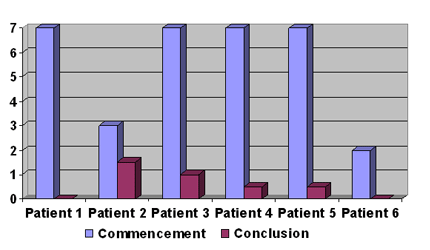
Chart 1: Digestive discomfort
Symptom 3: Mental and physical wellbeing
Mental and physical wellbeing was measured on a sliding scale of 1 -10. The value of 10 represents a feeling of extreme mental and physical wellness. Positive mental and physical wellness describes a feeling that the participants' diagnosis with fatty liver was not impacting on their wellbeing either mentally or physically. On average, mental and physical wellbeing had improved by 13%. Chart 2 represents the participant's overall feeling of mental and physical wellbeing from the commencement of the study period to the conclusion.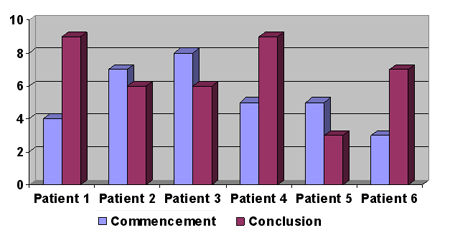
Chart 2: Wellbeing
Symptom 4: Individual symptom related to liver dysfunction
Because this clinical study was designed to acknowledge individual presentations of the same disease process, this symptom allowed for uniqueness of presentation. Participants were asked to describe their most troubling symptoms at their initial consultation. Any symptom that the study executives attributed to compromised liver function was then monitored as symptom 4 throughout the length of the program. This was measured on a daily basis per week. That is, the participant was asked how many days over the previous week they had experienced their particular individual symptom. Chart 3 illustrates the changes noted in the frequency that participants experienced their individual symptom.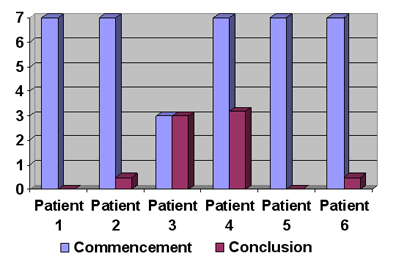
Chart 3: Individual symptom
Patient 1 experienced uncomfortable bowel movements, patient 2 had severe halitosis, patient 3 found their sleep quality was poor, patient 4 suffered with red itchy eyes, patient 5 experienced severe nausea and patient 6 found he had problems with concentration and mental clarity.Weight
Weight gain is a sign which is commonly associated with the development of fatty liver. Furthermore, weight gain is further accelerated by the progression of fatty liver. Weight loss is therefore a great predictor of a reduction in the degree of fatty infiltration. 100% of the participants experienced a significant weight loss with the average weight loss being 14.5 kg.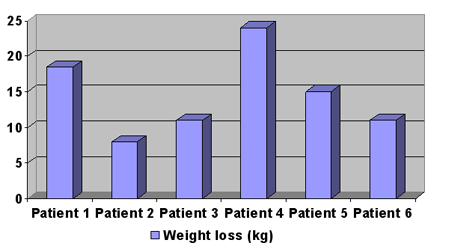
Chart 4: Weight Loss per participant in kilograms
Body mass index (BMI)
Body mass index describes an individual's body weight compared with their height. It is useful in determining whether one fits into the normal healthy weight range or not. BMI brackets are as follows:- Underweight = < 18.5
- Normal = 18.5 - 24.9
- Overweight = 25 - 29.9
- Obese = > 30 100%
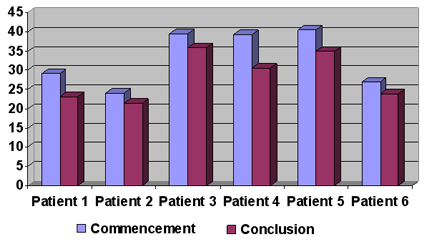
Chart 5: Body mass index (BMI)
Abdominal ultrasound
Abdominal ultrasounds are an effective tool in determining the presence or absence of fatty liver. 83% of participants' abdominal ultrasounds showed some degree of reduction of fatty infiltration. Figure 1 illustrates the degree of change noticed in abdominal ultrasounds of participants.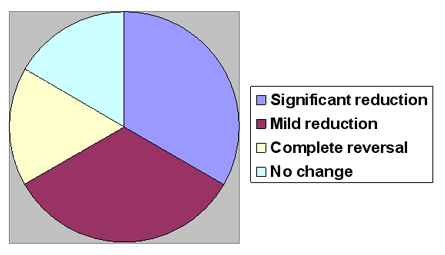
Figure 1: Abdominal ultrasound changes
Pathology tests
The pathology tests were chosen to evaluate liver function and fat and sugar metabolism. Fatty liver may or may not cause abnormal liver function tests, however an elevation of liver enzymes is indicative of liver inflammation. Fatty liver is often associated with an abnormal lipid profile and impaired glucose tolerance and insulin resistance. Table 2 provides the average levels of the pathology parameters tested at the commencement and conclusion of the study. Table 2 also provides the average change over the period of the study.| Pathology Test | Reference Range | Average level at commencement | Average level at conclusion | Average Difference |
|---|---|---|---|---|
| ALT (U/L) |
0 - 40 |
43 |
28 |
- 15 |
| AST (U/L) |
0 - 40 |
30 |
23 |
- 6.3 |
| GGT (U/L) |
0 - 45 |
42 |
30 |
- 11.8 |
| ALP (U/L) |
30 - 115 |
74 |
64 |
- 10.1 |
| Total Cholesterol (mmol/L) |
3.9 - 5.5 |
4.7 |
5.4 |
+ 0.67 |
| HDL (mmol/L) |
0.8 - 1.7 |
1.2 |
1.4 |
+ 0.23 |
| LDL (mmol/L) |
1.7 - 3.5 |
3 |
3.3 |
+ 0.30 |
| Triglycerides (mmol/L) |
0.5 - 1.7 |
1.1 |
1.4 |
+ 0.28 |
| Fasting Blood Sugar (mmol/L) |
3.6 - 6.0 |
5.52 |
5.38 |
- 0.13 |
| Fasting Insulin (mU/L) |
0 - 20.0 |
15.68 |
11.18 |
- 4.53 |
Table 2: Pathology tests
Conclusion
This clinical study has provided laboratory evidence that indicates that liver injury caused by fatty liver, and fatty infiltration in itself, may be significantly reduced, when effective dietary and supplemental modifications, in particular Livatone Plus, are implemented. Considering that:- At present, there is no orthodox medical treatment, apart from weight loss, that is proven to effectively treat or manage fatty liver or its consequences.
- Fatty liver is associated with diseases such as obesity and diabetes.
- Fatty liver and especially the more insidious form of NASH may progress to severe liver disease. There is an urgent need for proven, effective complementary medical protocols that cause no harm.
These statements have not been evaluated by the FDA and are not intended to diagnose, treat or cure any diseases.
Know someone who might benefit from this article? Share it!
Need Help?
1-888-75-LIVER
Monday to Friday, 9:00 am to 5:00 pm MST
100%
Satisfaction Guaranteed
If it’s faulty or wrongly described, we’ll replace it.










